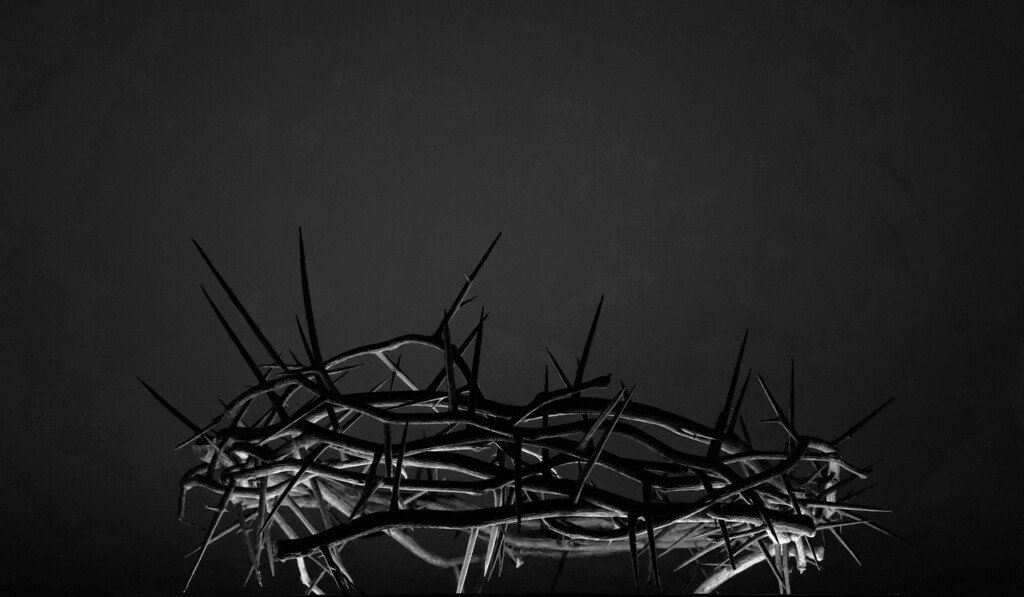“The resurrection of Jesus Christ is the explosive turning point of history, the moment where life triumphed over death and everything changed forever.”
It’s the cornerstone of our faith, the defining moment of victory over death itself. In this GAN TV weekly feature article, we won’t cover everything—no single article could—but we will carefully examine this life-altering truth of what Christ accomplished with depth and clarity. Our hope is to stir your heart, provoking a desire to explore even further.
The Apostle Paul, who carried the gospel to the Gentile world, makes it clear: without the resurrection, our faith crumbles. He declares in 1 Corinthians 15:17, “And if Christ has not been raised, your faith is futile; you are still in your sins.” The resurrection isn’t just an event—it’s the very foundation of our hope.
For Paul, it was not just something that happened to Jesus—it was the foundation of the entire gospel. Through Christ’s resurrection, we do not merely receive hope for the afterlife; but the world through Christ was birthed into a new reality of life, freedom, and victory over death.
Early Christians saw the resurrection as more than proof of Christ’s divinity; they saw it as the inauguration of a new reality. Paul declares in 1 Corinthians 15:20: “But now Christ has been raised from the dead, the “first fruits” of those who have fallen asleep.”
The term “first fruits” is crucial. It reveals that Christ’s resurrection wasn’t the end—but the beginning of the resurrection for all humanity. As Athanasius explains in On the Incarnation: “The Word took a body so that He might offer it in sacrifice and deliver all by His resurrection.”
Christ’s rise from the dead is the cosmic reversal of Adam’s fall. Humanity’s destiny was never annihilation but restoration. Death was never going to have the the final word—life was. Paul reinforces this in Romans 6:9:“For we know that since Christ was raised from the dead, He cannot die again; death no longer has mastery over Him.”
Through Christ, death itself has been dethroned.

The Resurrection is a Person, Not Just an Event
The resurrection is not just something that happened to Him, like an event; it is who He is. In these words, Christ unveils the fullness of His divine mission: to bring life out of death, light out of darkness, and restoration out of ruin.
When Jesus spoke these words to Martha before raising Lazarus, He was shifting the focus from a distant hope to a present reality. Martha believed in a future resurrection, saying, “I know that he will rise again in the resurrection on the last day” (John 11:24). But Jesus’ response redefined everything: “I am the resurrection and the life. The one who believes in Me will live, even though they die.” (John 11:25)
With this statement, Christ declared that resurrection is found in Him. To be in Christ is to be living in resurrection life. This is why Paul later writes: “If anyone is in Christ, he is a new creation; the old has passed away, behold, the new has come.” (2 Corinthians 5:17)
Origen and Gregory of Nyssa expounded on this, teaching that resurrection is not just a future hope but a present transformation. In Christ, we have already passed from death to life.
Why Is Jesus the Resurrection and the Life?
But why is Jesus the resurrection and the life? What does this reveal about His identity and His work? Let’s examine some truths about Jesus:
He Is the Source of all Life
To be the resurrection, Jesus must first be the life. John begins his Gospel by declaring: “In Him was life, and the life was the light of men.” (John 1:4) Jesus is not merely someone who gives life—He is life itself. This is why death could not hold Him. As the eternal Son of God, co-eternal with the Father and the Spirit, Jesus possesses life in Himself (John 5:26). Living in the resurrection is the natural outflow of His divine life breaking the power of death.
Athanasius, in On the Incarnation, explains this beautifully:
“It was necessary that what was once created in Him should not perish. The Word took a body so that, through His resurrection, He might restore all things.”
Jesus is the resurrection because His divine life cannot be overcome by death. He is the life because in Him, all things are sustained and made new.
He Has Conquered Death for All
In 1 Corinthians 15:21-22, Paul declares: “For since death came through a man, the resurrection of the dead comes also through a man. For as in Adam all die, so in Christ all will be made alive.”
Jesus did not rise only for Himself—He rose for all of humanity. The early church understood Christ as the New or Last Adam, the one who undoes the curse of death brought by the first Adam. Where Adam brought death, Christ brings life. Gregory of Nyssa, in The Great Catechism, writes: “He who is the Resurrection of all raises up humanity as a whole, for in Adam all die, but in Christ all shall be made alive.”
This is also the very heart of Apokatastasis—the restoration of all things. That Jesus is not merely the first to rise; He is the first fruits of a resurrection that includes all people (1 Corinthians 15:20). His victory over death is universal in scope.
He Restores Union with God
Death, in biblical terms, is more than biological—it is separation from God. Christ does not just raise us physically; He restores us to communion with the Father. This is why Paul writes in Ephesians 2:5-6: “Even when we were dead in transgressions, God made us alive together with Christ… and raised us up with Him and seated us with Him in the heavenly realms.”
The resurrection is not just about escaping the grave—it is about restoring union with Christ in divine life. This is the heart of the New Covenant. We are not merely waiting for a future resurrection; we have been already raised with Christ.
Origen, in De Principiis, affirms this by saying: “Through the resurrection, all things will be restored to their original unity in God.”
Jesus is the resurrection because He does not merely defeat death—He draws all humanity into divine life.

Tetelestai: His Work Is Finished
On the cross, Jesus declared, “It is finished” (John 19:30). The resurrection is the confirmation that His work is truly complete. If Jesus had not risen, the work would remain unfinished. But because He did rise, we know that our salvation is secure, our justification is complete, and our future is certain.
Paul writes in Romans 4:25: “He was delivered over for our transgressions and was raised for our justification.”
Athanasius affirms that Christ’s resurrection was not just for Himself, but for all: “He became what we are so that we might become what He is.”
We do not strive to attain life—we realize, awaken, are persuaded that we already have new life in Him. This is the reality of the finished work: we are not working toward resurrection; we are living from it.
Because Jesus has risen, we are no longer bound by death—not just in the future, but now. This is good news! We live in the power of the resurrection today.
Paul writes in Romans 6:4: “Just as Christ was raised from the dead through the glory of the Father, we too may live a new life.” This is the heart of the gospel: we are not striving for resurrection life—but swimming in it. In His finished work we are no longer bound by sin, fear, or separation. In Christ, we have been raised (Ephesians 2:6).
Athanasius affirms this, writing:
“Because of the resurrection, corruption is ended, death is conquered, and we are now lifted up into incorruptible life.”
Through Him, death is defeated.
Through Him, we are raised to life.
Through Him, the universe itself is being made new.
Death and the Resurrection of Jesus
The death and resurrection of Jesus Christ are not two separate events; they are one seamless act of redemption. His death was not a defeat, and His resurrection was not just a comeback—together, they reveal the fullness of God’s love, the power of the finished work, and the ultimate triumph of life over death.
The early church fathers, from Irenaeus to Athanasius, saw Christ’s death and resurrection as the turning point of history—not just for humanity, but for all creation. Through His death, Jesus destroyed the dominion of sin; through His resurrection, He brought forth new life for all.
His death ended the old; His resurrection began the new. In Him, we see the fullness of God’s love—a love that does not abandon us to the grave but raises us to eternal life.
Through Christ, death is no longer a curse; it is a doorway to glory.
Through Christ, we do not fear the grave; we embrace resurrection life.
Through Christ, all things are being restored.
This is the gospel: Death is not the end. Jesus is. His rising is the final word over death. When Christ rose, He did not merely return to life—He transformed life itself. He emerged not just as the crucified one but as the glorified one, the firstfruits of a New Creation (1 Corinthians 15:20). Gregory of Nyssa, in The Great Catechism, declares: “By death He trampled death, and by His resurrection, He restored life to all.”
This is also why 1 Corinthians 15:54-55 triumphantly proclaims: “Death has been swallowed up in victory. O death, where is your sting? O grave, where is your victory?”
Christ’s resurrection is the undoing of Adam’s fall, the restoration of humanity, and the beginning of the renewal of all things.
Why Did Jesus Have to Die?
For many, the idea that Jesus “had” to die raises many questions. Couldn’t God simply forgive humanity? The answer lies in the nature of sin and death. Sin is not just moral failure—it is separation from divine life. A separation in our minds that also brought with it many results, including death. Death, then, is not just a punishment; it is the natural consequence of a world estranged from its source of life.
Athanasius explains in On the Incarnation: “The Word took on a mortal body, that through death He might destroy death.” This echoes Hebrews 2:14:“He too shared in their humanity so that by His death He might break the power of him who holds the power of death—that is, the devil.”
Jesus’ death was not about satisfying God’s wrath; it was about breaking the power of death itself. He entered into our mortality to rescue us from it.
The Resurrection and Apokatastasis: The Restoration of All Things
If Christ’s death was the end of the old, His resurrection is the beginning of the new. The early church fathers who embraced Apokatastasis saw the resurrection as the guarantee that all things will ultimately be restored.
Acts 3:21 speaks of “the restoration of all things, as God promised long ago through His holy prophets.” Origen and Gregory of Nyssa taught that because Jesus conquered death for all, all would one day be raised and restored.
Origen, in De Principiis, wrote:
“The end is always like the beginning, and we must believe that God will restore all His creatures to unity with Himself.”
The resurrection is not just just personal—it is cosmic. Christ’s victory is not only over sin but over every power that opposes life, including the final enemy: death itself (1 Corinthians 15:26).
The early church understood this mystery: Christ did not come simply to save a few—He came to raise all humanity into divine life. This is the gospel. This is the power of the resurrection. And this is why, in Christ, life has the final word.

The Gospel’s Heartbeat
In closing, the resurrection of Jesus is not simply an apologetic argument—it is the very heartbeat of the gospel. It is the fulfillment of God’s eternal purpose to redeem, restore, and reconcile all things in Christ.
Paul passionately proclaims in 1 Corinthians 15:57: “Thanks be to God! He gives us the victory through our Lord Jesus Christ.” The early church understood this and proclaimed it boldly: Christ’s victory was cosmic.
Through the resurrection, we see the Father’s love in action, the Son’s triumph over death, and the Spirit’s power making all things new. This is the good news:
- Life has conquered death.
- Grace has triumphed over sin.
- Love has shattered the grave.
The empty tomb is not just an ancient testimony—it is the eternal promise that in Christ, all things will be made new!!
Recommended GAN TV Host Teachings
Matthew Hester The Kingdom Is For Everyone – Episode 24, Watch The Hope of the Resurrection -> HERE
John Crowder, host of The Jesus Trip watch A Better Resurrection -> HERE
John Crowder, Gan TV Host of the Jesus Trip click below for Resurrection Must Be Literal
Sources for this article:
1. Biblical Sources (Primary)
- 1 Corinthians 15 (The Resurrection Chapter)
- Romans 4:25, 6:9, 8:11 (Justification and resurrection life)
- Ephesians 2:6 (Seated with Christ in resurrection life)
- Acts 3:21 (Restoration of all things)
- 1 Corinthians 15:22 (In Adam all die, in Christ all are made alive)
- 1 Corinthians 15:54-57 (Victory over death)
- Hebrews 2:14 (Christ’s death destroys the power of death)
2. Early Church Fathers (Patristic Writings)
- Athanasius, On the Incarnation Available HERE – ON AMAZON
- Explains how Christ took on flesh to defeat death and restore humanity.
- “The Word took a body so that He might offer it in sacrifice and deliver all by His resurrection.”
- Gregory of Nyssa, The Great Catechism
- Declares that Christ’s resurrection trampled down death and restored life to all.
- “By death He trampled death, and by His resurrection, He restored life to all.”
- Origen, De Principiis Read HERE
- Teaches Apokatastasis—the full restoration of all things through Christ’s resurrection.
- “The end is always like the beginning, and we must believe that God will restore all His creatures to unity with Himself.”
- Irenaeus, Against Heresies
- Affirms the resurrection as the fulfillment of God’s purpose for humanity.
- “The Word of God became man, that man might become partaker of divine life.”
3. Theological Works on the Resurrection and Apokatastasis
- John Behr, The Mystery of Christ: Life in Death Available HERE -> ON AMAZON
- Discusses the resurrection as the central reality of Christian life, deeply rooted in the teachings of the early church.
- David Bentley Hart, That All Shall Be Saved
- Engages with the implications of Christ’s resurrection for universal restoration (Apokatastasis).
- Fr. John S. Romanides, The Ancestral Sin
- Connects the resurrection with the breaking of death’s power and human restoration.
- Metropolitan Kallistos Ware, The Orthodox Way
- Explores how the resurrection is more than just a historical event—it is the transformation of all reality.
4. Secondary Sources (Modern Theological Commentary)
- N.T. Wright, The Resurrection of the Son of God Available HERE -> ON AMAZON
- A deep dive into the historical and theological significance of the resurrection.
- T.F. Torrance, The Trinitarian Faith
- Links resurrection theology with the Trinity and the finished work of Christ.














